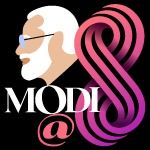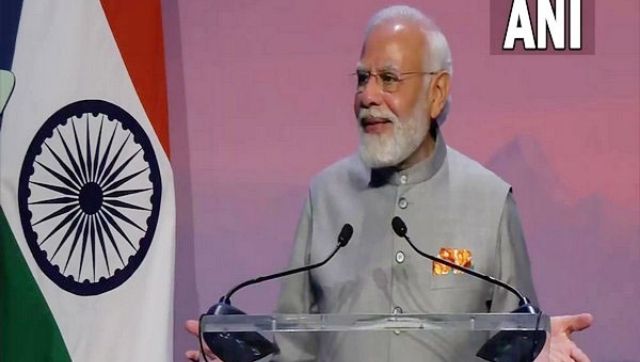 Rahul Gandhi’s complete bewilderment over an innocuous question by a Cambridge don on the relative weightage of violence and non-violence in India’s public life was undeniably embarrassing for all those who had attached great significance to his being at complete ease in an international setting. To be fair, however, this was an unfortunate blip in his otherwise glib assessment of contemporary Indian politics. Rahul’s understanding of India’s recent history may be lacking depth, but that didn’t deter his passionate assertion that the country was in, what Marxists would call, a ‘pre-revolutionary situation’ with the potential of one spark lighting the proverbial prairie fire. The firm belief that India’s voters are exasperated with the eight-year rule of Narendra Modi has been the signature tune of the Congress leader since 2017. First, there was his claim during the Uttar Pradesh election of 2017 that demonetisation had devastated the economy and ruined the livelihood of ordinary people from all walks of life. The second was his insistence during the 2019 general election campaign that the man who claimed to be the chowkidar of national interest was actually a thief. Finally, there was his stinging indictment in 2022 of India’s campaign to fight the COVID-19 pandemic, an endeavour that he felt had brought international disgrace to India, not to mention its ruinous effects on people’s livelihoods. [caption id=“attachment_10723561” align=“alignnone” width=“640”]  Prime Minister Narendra Modi at ISB Hyderabad. Twitter/@narendramodi[/caption] The grim reality of repeated electoral setbacks and internal listlessness in the Congress hasn’t deterred this no-holds-barred assault on the BJP by the former Congress president. However, while aggressive opposition to the ruling dispensation is the natural duty of the main Opposition party, it is prudent to question its effectiveness. Have the Congress attacks on the Modi government failed to yield dividends because its understanding of the adversary’s vulnerabilities is flawed? Has Rahul, like many others in the Opposition, failed to grasp the significant shifts in governance and political mobilisation brought about by Modi since 2014? It would certainly appear so. For a start, there is a striking mismatch between Rahul’s claim that India is overwhelmed by distress and that Modi has destroyed the plank on which the growth story was scripted from 1991 to 2014 and the BJP’s recent decision to base its 2024 re-election campaign on the efficacy of Modi’s governance. The Congress claim doesn’t appear to be backed up by voting behaviour. In 2014, when Modi was still a distant (and untested) political leader outside western India, the BJP won a clear majority on its own in the Lok Sabha and polled nearly 171 million votes — up from the 78 million in LK Advani’s final campaign of 2009. Five years later, when Brand Modi had become national, the BJP improved its majority tally and, more significantly, polled nearly 220 million votes. [caption id=“attachment_8637421” align=“alignnone” width=“640”]  Senior BJP leader LK Advani. ANI[/caption] If its allies are included, the BJP-led alliance won a 41 per cent vote share, with representation from all major states barring Kerala. Both anecdotal and survey data clearly indicated that a significant factor in the BJP victory were two welfare schemes of the Centre, viz the construction of toilets under the Swachh Bharat Mission and the cooking gas connections made available to BPL families under the Ujjwala programme. There is also reason to believe that the direct bank transfer of cash subsidies to farmers also played a role. In the 2017 Uttar Pradesh Assembly election where the BJP won an emphatic victory, demonetisation was perceived as an important facet in the fight against corruption. Five years later, the BJP’s re-election in India’s largest state was ensured by the delivery of free rations to households during the disruptions of the pandemic and the awesome free vaccination programme that was a model of efficiency. According to Rahul Gandhi, the BJP has ensured its electoral dominance through sectarian polarisation. Undeniably, identity issues acquire some importance during the concluding stages of election campaigns, but they appear to play a cementing role. Had Modi’s charisma as a tough, no-nonsense and incorruptible leader been exclusively centred on his Hindu Hridaysamrat persona — as was definitely the case in the Gujarat Assembly election of 2002 — it would have carried diminishing returns. However, when backed up by strong performance on the ground and a perceptible mood of national optimism, the Hindu card acquires a different dimension altogether. In the case of the BJP, it has also meant developing inroads in Dalit and backward caste communities that had hitherto been outside the orbit of saffron politics. [caption id=“attachment_10698991” align=“alignnone” width=“640”]  Congress leader Rahul Gandhi. ANI[/caption] In the past, the importance of the party (for both the Congress and the BJP) declined once political power was realised. What the BJP has done — and Amit Shah’s contribution in this regard is seminal — is to transform the party into a state of permanent readiness. No other political party has been able to match the BJP in this regard. During the Atal Bihari Vajpayee years, there were unending reports of tensions between the government and the RSS and of party functionaries being disregarded by government ministers. It is interesting that these reports have more or less disappeared from the media, and been replaced by reports of government ministers being specially deputed to bolster party organisation in the states. The BJP seems particularly mindful of two things. First, the credit for government welfare schemes and infrastructure projects must accrue to the BJP, and be reflected electorally. And second, that efforts must be made to optimise the vote by reaching out and motivating voters in every corner. Under the new party culture, nothing is left to chance. This meticulous purposefulness has yielded rich dividends in states outside the Hindi belt where the BJP barely existed until 2014. Of course, there are problem states — Kerala and West Bengal head the pack — but the laggards have been outflanked by spectacular gains in Assam, Manipur and even Maharashtra.
***
**Click here to read more on Modi@8*****
Finally, the BJP under Modi has achieved levels of high effectiveness in the realms of public messaging and communications. Interestingly, the outreach hasn’t happened through the mainstream print and electronic media, but through the deft use of social media platforms. Contrary to Rahul’s claim that the media has prostrated itself before the Modi government, the reality is that the BJP has (in its own mind) downgraded the primacy of the media and accorded equal importance to direct communications with those with smartphones. It has established new rules of political communications that other parties — despite acknowledging the shifts — have been slow to respond. The impression that there is an overdose of Modi stems almost entirely from the BJP being left without a challenger. The only real challenge to the BJP has come from the remnants of the old Congress and Left ecosystems. The BJP has found it difficult to secure a toehold in academia (particularly the liberal arts and social sciences departments) and among India-related scholars in foreign universities. It has often come under pressure from the amplification of critical voices questioning its commitment to secularism and the nebulous ‘idea of India’. In attempting to combat these influential voices of relentless criticism and critical foreign media, it has so far failed to build an intellectual counter-establishment. At the same time, it has nurtured combative individuals (mistakenly called an organised troll army by its critics) who have successfully put enough question marks to successfully dilute the impact of sustained criticism. It would not be an exaggeration to suggest that just as the India of 2014 has changed — sometimes unrecognisably — in eight years, politics too has undergone a significant transformation. As a political party with an eye on securing power, expanding its social reach and responding to new challenges, the BJP has often remodelled itself, but without giving the impression of discontinuity. By contrast, its rivals have been less nimble-footed. The writer is a Member of Parliament (Rajya Sabha). Views expressed are personal. Read all the Latest News , Trending News , Cricket News , Bollywood News , India News and Entertainment News here. Follow us on Facebook, Twitter and Instagram.


)
)
)
)
)
)
)
)
)



